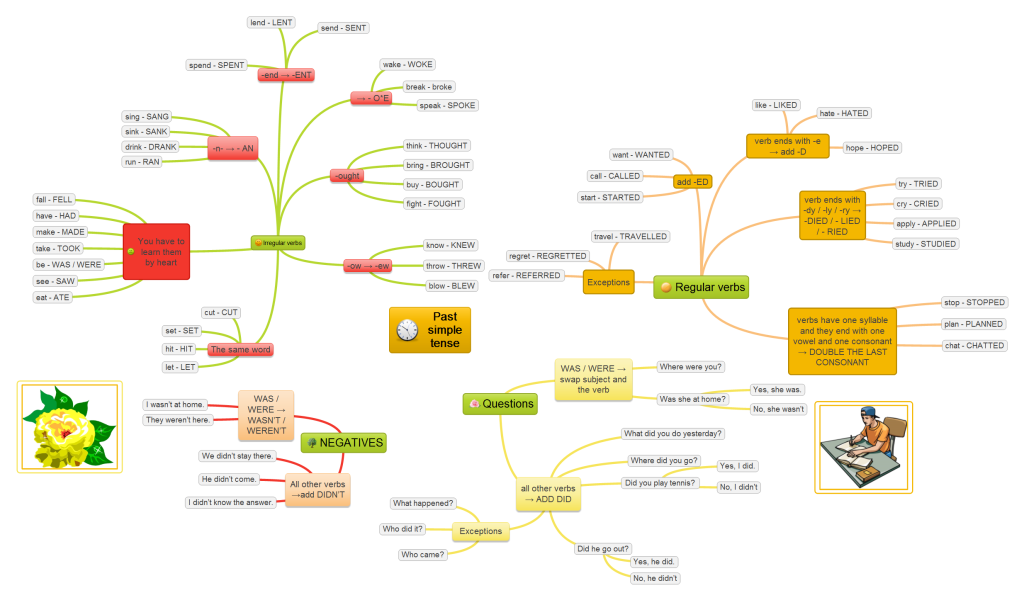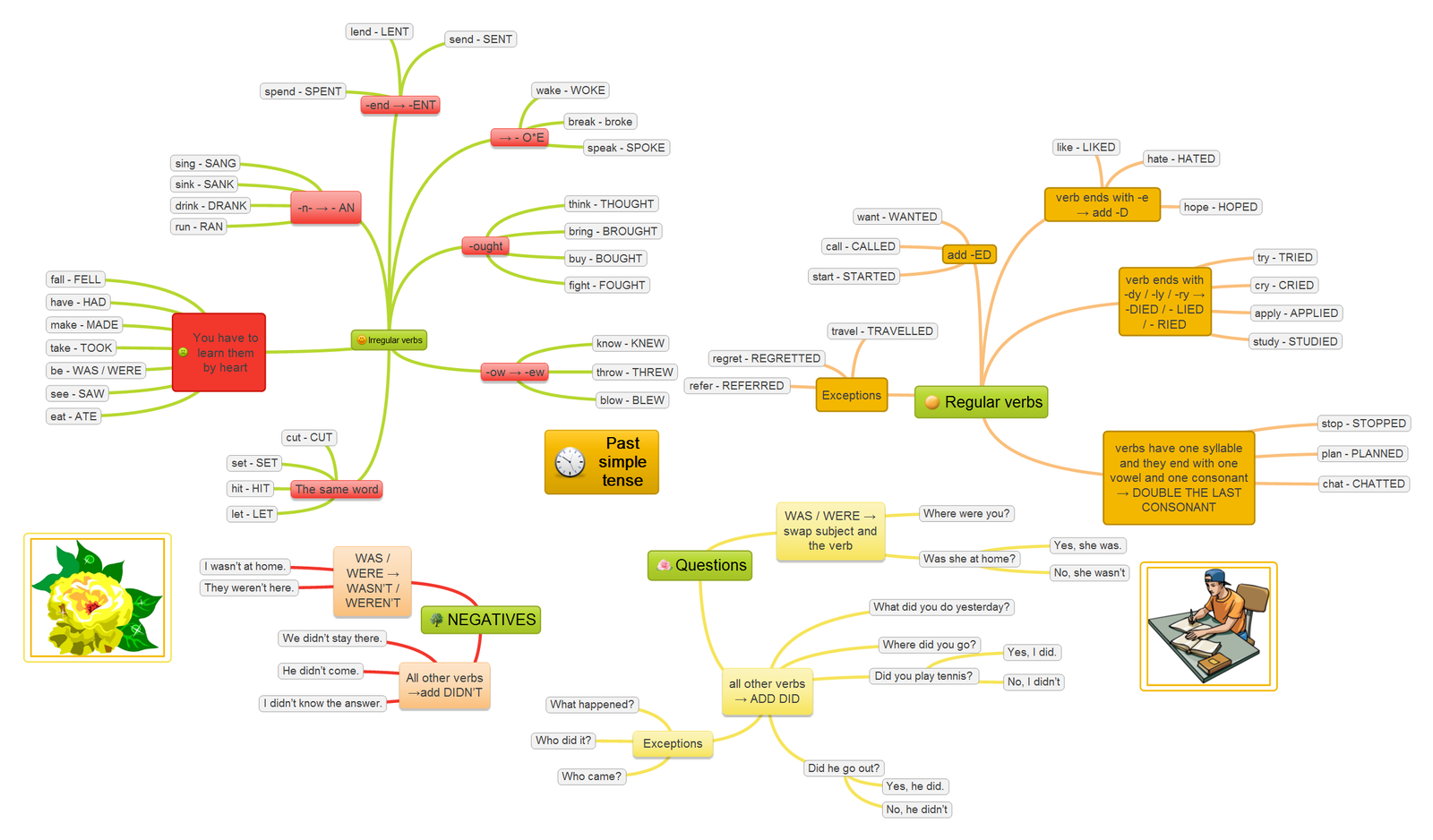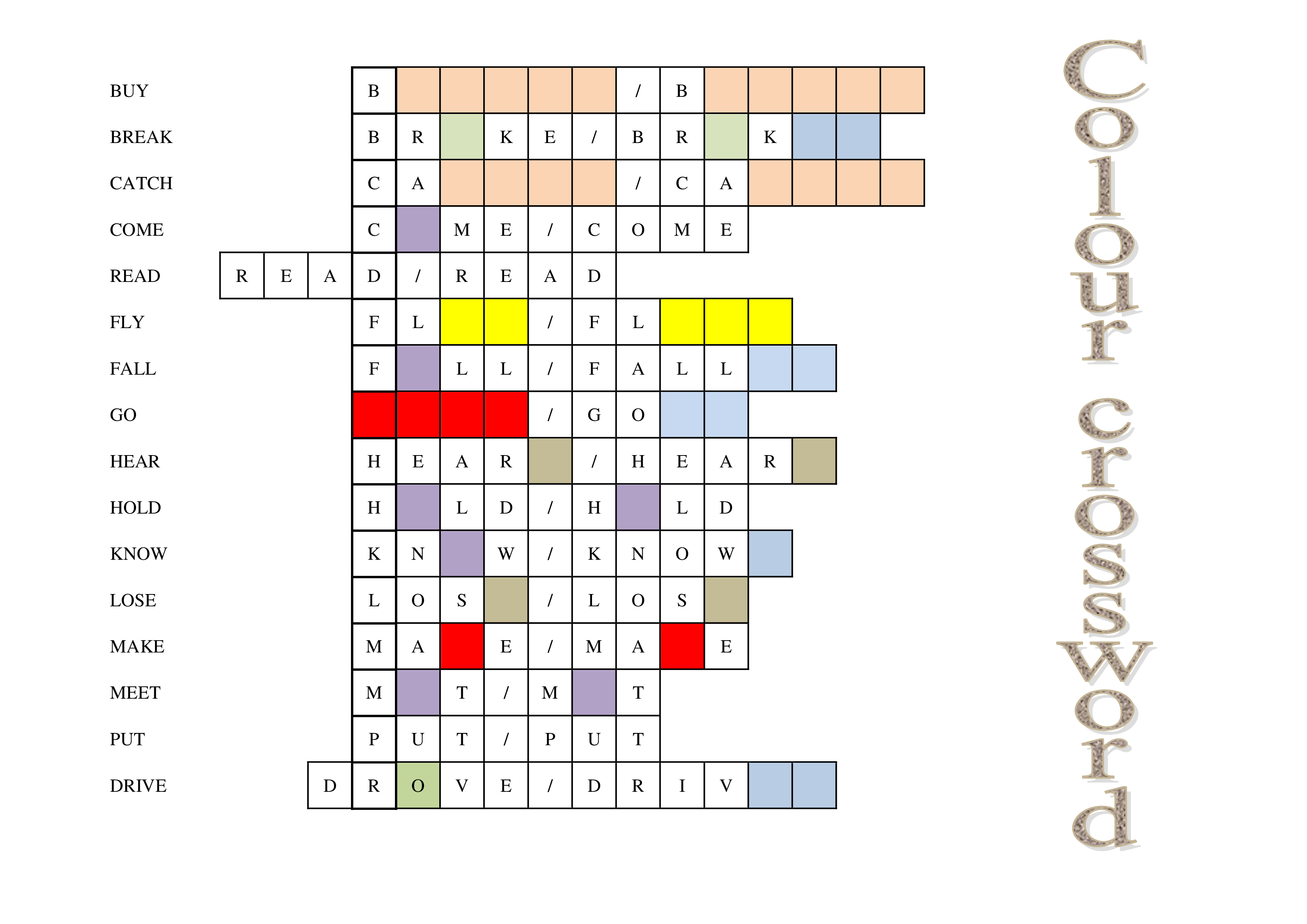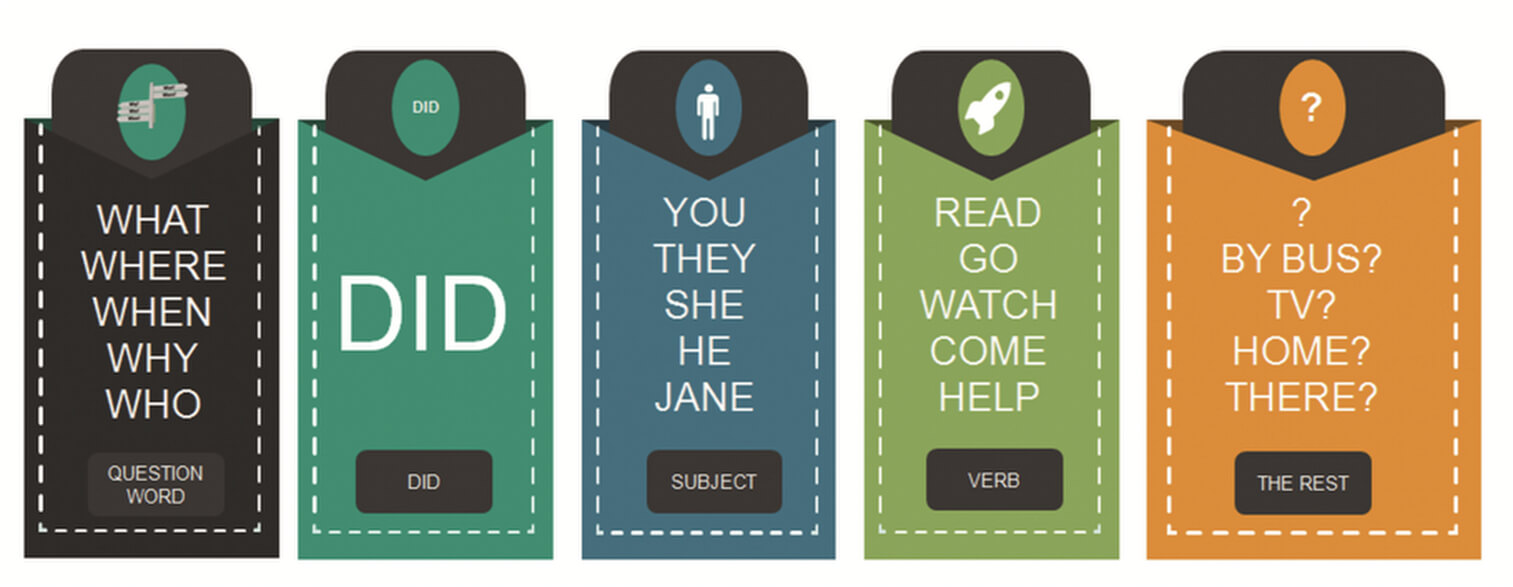Past simple tense
Past simple is one of the most important English tenses. Scott Thornbury once wrote that he would sacrifice all the perfect tenses and other grammar if he could teach past simple properly. I agree with him, because if the students could you this tense, then I would probably forgive them everything.
Basic English grammar rules – infographic
ADVERTISEMENT:
[showmyads]

Basic English grammar rules – online quiz
During the week more activities on Past simple tense are coming. Watch out for them.
To be the first to learn about our latest games and activities follow us on TWITTER:
Follow @Zdendaa







thanks a lot!!! that’s exactly what I need right now!!!
OK
iwant to improve my language > but sorry without bay mony> free learning english
My students will love this! Thanks.
it is really great and very clear,thanks very much…
A very helpful and attractive mind map. Thank you.
Just one thing, I don’t think regretted is an exception. Any verb with consonant vowel consonant, and which has the stress on the last syllable will double the last consonant, won’t it?
It’s great, though one thing needs correcting… regular verbs like: travel are not exceptions. The rule about doubled letter just says that the ending pattern is CVC (consonant-vowel-consonant), not just VC…
Geat page, thank
I am an English teacher already, this is an easy way of teaching the tense. I am thankful.
An easy to follow guide can you post or send more to me please?This is what I hav ebeen looking for .Thanks
Love it. Very useful for me n my daughter. Thank you so much. How about another tense.
I also can use this for my students to understand easily.. Thanks..
This diagram is well designed and I certainly understand and second Mr. Thornbury’s sentiments. With the verbs that end in “y”, double consonants, the differences between American and British spelling (traveling/travelling) and, to top it off, the long list of irregulares, often the most common verbs, that have to be memorized, this is one of the great stumbling blocks for EFL students. I have taught very advanced students with a strong command of the language and all of them needed to review irregular verbs. One of the problems is we tend to teach them as if there were no structure to them, and it’s not true, as the diagram posted by Zdenda points out, there are categories and patterns and these patterns make them easier to memorize. http://www.verbmatrix.com has three levels of lists for EFL students (plus a master list and two lists of prefixed verbs for reference) that organize irregular verbs by categories and pronunciation patterns, making them much easier to memorize. Click on the ES symbol for Spanish and you will have access to the page in Spanish. Go into Printable lists and you will find printable lists in English, French, Portuguese and Spanish. We are presently expanding and hope to have more features and languages available soon.
Jeff Diamond
http://es.linkedin.com/pub/jeffrey-diamond/4a/23/a01/es
nice .very useful. thank you
Very fun. Thanks.
I’m learning English but my problem tense. Where I’ll add ed from last part of word?
Please help me and teach me.